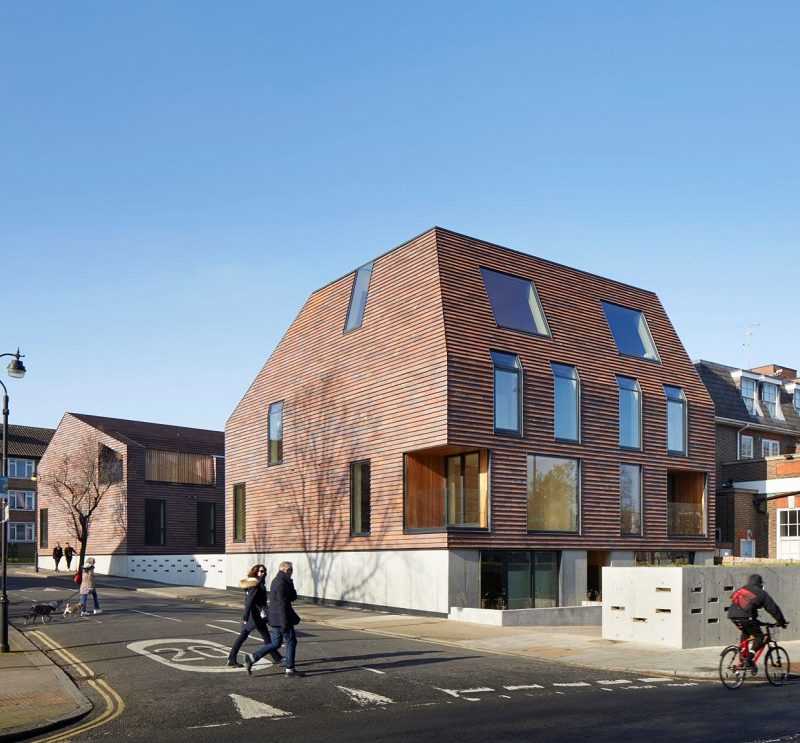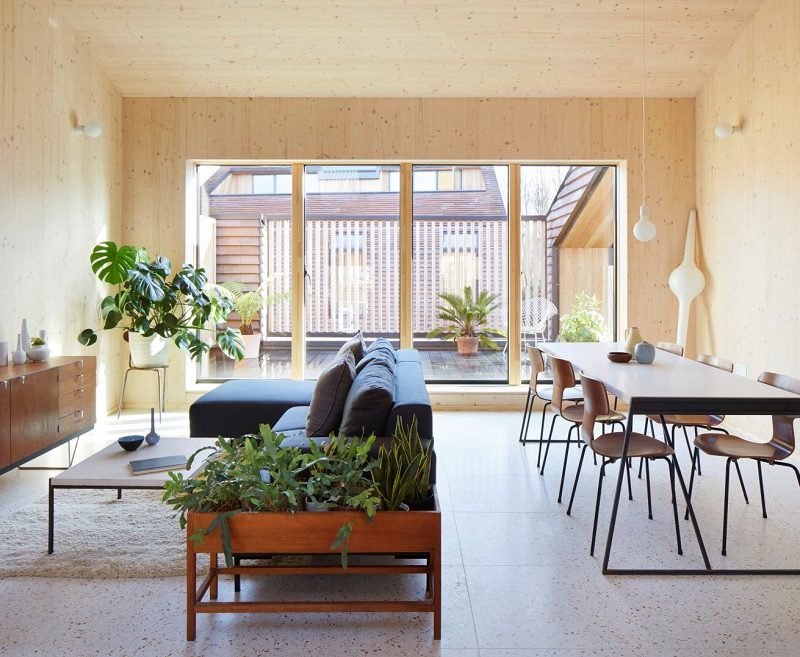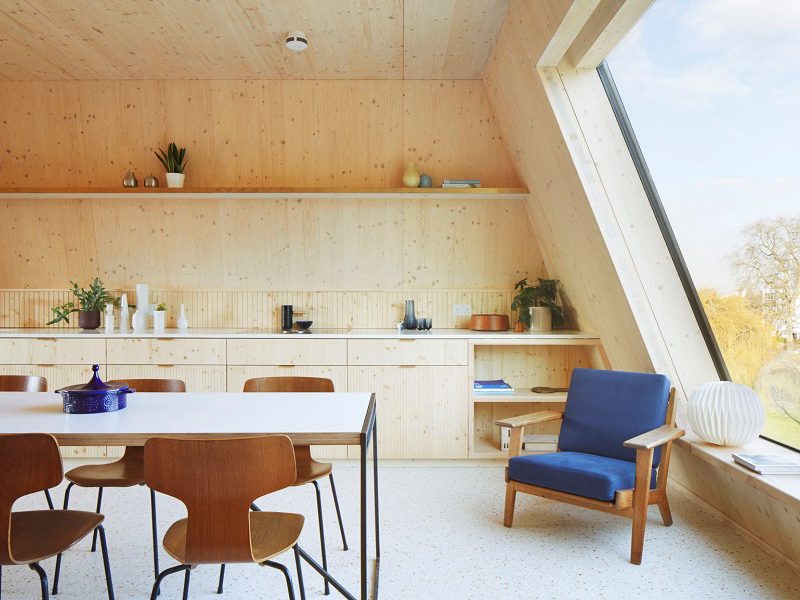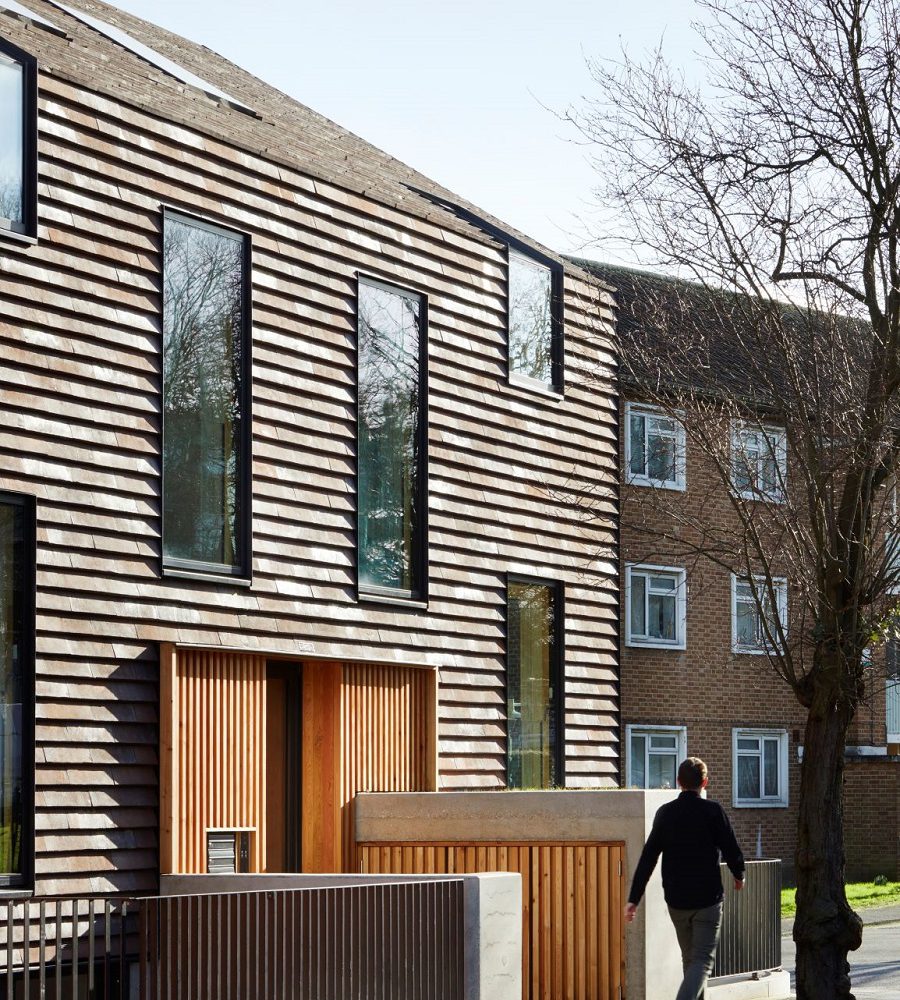Project: The Rye
Company: Stora Enso, Eurban + Tikari Works
Sector: Residential
Technology: Cross Laminated Timber (CLT)



Overview:
The Rye by Tikari Works is a development of ten apartments overlooking Peckham Rye Park. The scheme is arranged in two buildings: a four unit block with two one-bed flats at ground floor and two large two-bed duplex apartments above. A second, larger block of six units houses two two-bed flats on each of the ground and first floors and two large two-bed duplex apartments above.
The buildings are formed of CLT which has been used for the superstructure and for all internal walls and staircases. The four duplex apartments are designed with an upside down arrangement: bedrooms are located at entry level with the living space above to maximise access to light and views. This arrangement has allowed the creation of large vaulted living spaces and use of 6m CLT panels forms long, uninterrupted spans that result in airy, generous volumes at the top of both blocks.
The one and two bedroom apartments at ground floor are divided in a more conventional way, still with large, airy spaces making the most of CLT’s ability to span 6 metres. All ground floor units have access to private gardens and the upper flats have either punched in balconies or external terraces cut into the form of the building.
Tikari Works were the architect, developer and main contractor for the project. Their approach was for efficiency and ease of buildability and this dictated the design decision to create relatively compact blocks with efficient floorplans. CLT met these requirements due to its mm tolerance and speed and ease of construction while still allowing scope to design beautiful homes that would appeal to buyers looking for something different and authentic.
The apartments overlook Peckham Rye Park and Tikari Works explored many ways in which the internal spaces could interact with the mature trees and historic setting of the listed Victorian parkland. Initial designs which incorporated a lot of glass were rejected in favour of windows that frame the view, and the result is a series of large punched windows creating specific framing between the inside spaces and the park in a way that is more dramatic than giving a whole side of the building over to glass. It is also more sustainable.
The use of materials is efficient and a limited palette of finishes has been used throughout. Wood is used in various forms: CLT is exposed throughout with whitewashed timber floors and the kitchen cabinetry is made from three layer spruce ply with CNC cut grooves. A red quarry tile is used on the floors and for the bathroom tiling and this links the inside to the red masonry skin outside.
